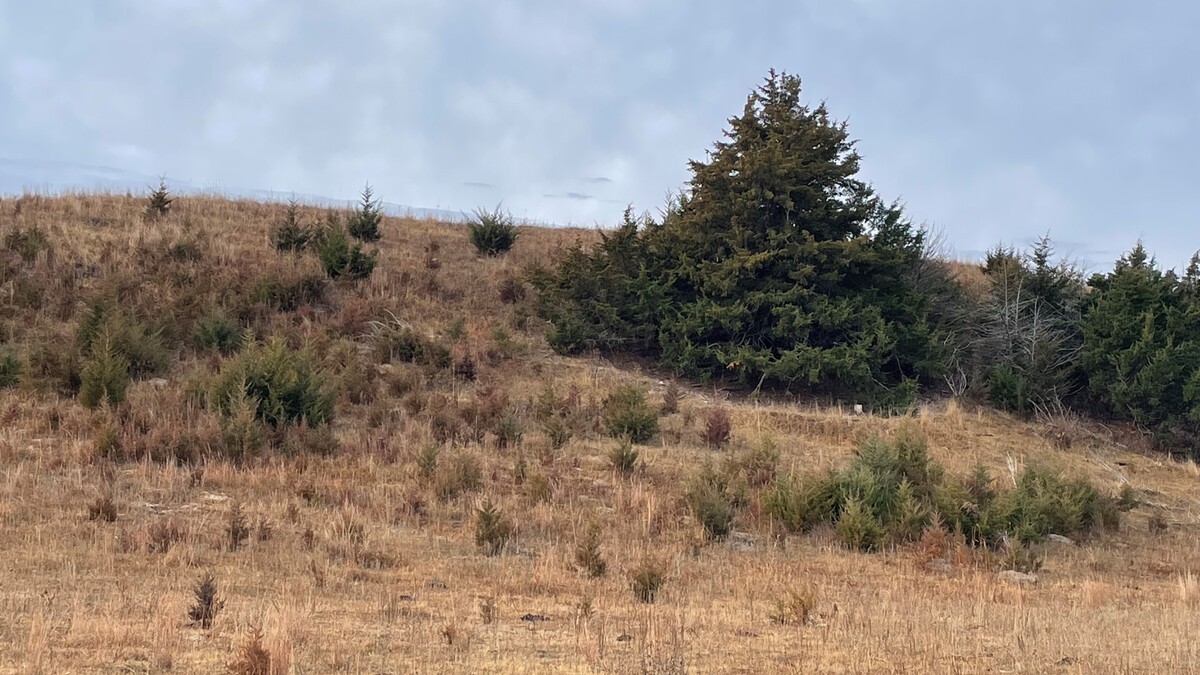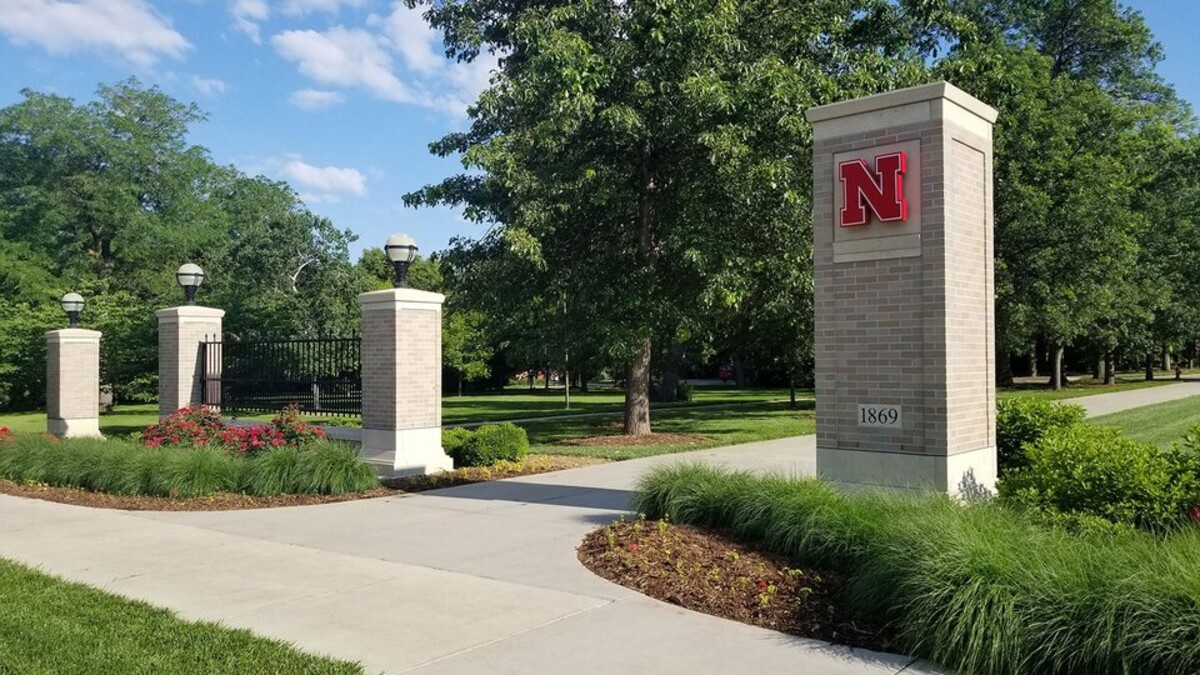In a quest to record the silence at his feet, Noori Choi found himself facing down the sound and fury of the skies.
It was summer in northern Mississippi, rich in relative humidity and deciduous forests and wolf spiders. Choi, then a doctoral student at the University of Nebraska–Lincoln, was dedicating two months to sharing a cabin with mice while on a research expedition unlike any before it.
On one of those roughly and especially rough 60 days, a thunderstorm swept in. Several hundred million volts hurtled toward the cabin, intercepted by a tree not 100 feet from it. Thunder followed, then fire, soon doused by the downpour that accompanied it.
OK, so this is not the safest place, Choi recalled thinking.
It was hardly the first or the last complication he would encounter. Even the local deer would unknowingly conspire against him. But with the aid of some microphones and technical ingenuity, Choi would emerge from the forest with a proof-of-concept for documenting the vibroscape: the ground-bound realm of vibrations that spiders, insects and an estimated quintillion other arthropods employ to court mates, hunt prey and escape predators.
By deploying 25 microphones across 1,000-square-foot swaths of the forest floor, Choi has managed to collect ground-transmitted vibrations, arachnid-based and otherwise, on a scale never before achieved in the wild. The final tallies: 39,000 hours of recording that yielded more than 17,000 series of vibrations. Sussing out the signals from such a vast dataset became easier after Choi wrote a program that could filter noise from the lo-fi recordings, usually a manual task that has bottlenecked efforts to compile a library of vibratory signals on par with their audible, airborne counterparts.
“This is 100% novel,” said Eileen Hebets, Choi’s doctoral adviser and George Holmes University Professor of biological sciences at Nebraska. “I think it’s going to open up avenues of research that people have been really trying to explore over the years — but just have never been able to get the door open. And I think Noori has fully opened it, and he put the doorstop in there, and now everybody can go through.”
In the lab, arachnologists and others often study vibratory signals with a so-called laser vibrometer, which is generally too costly to buy in bulk or leave exposed to the rigors of the field. So Choi turned to contact microphones: small discs that cost him mere dollars apiece and can pick up vibrations moving through whatever substrate they rest on.
[media:2:left]Choi would spend his days arranging not just the microphones but pitfall traps that verified the presence of wolf spiders, the likes of which he and Hebets have devoted years to studying. As expected, Choi came across three species: the closely related Schizocosa stridulans and S. uetzi, along with their next-closest relative, S. duplex. Each of the species relies on vibratory signals to woo potential partners, with S. stridulans males known for their especially complicated courtship routine.
The Husker duo knew that the wolf spiders were competing for mates, food and other resources distributed across the forest. But the researchers wondered whether the arachnids might be contending for or divvying up the finite space that would transmit their vibrations, too. Which led, naturally, to other questions: If that turf overlapped, could simultaneous signals interfere with each other, potentially wasting the time and energy that the arachnids invested in producing them? And if so, did the spiders modify their vibratory signals the way some birds and other animals do their calls?
Back in Lincoln, Choi’s initial analyses revealed an unmistakable, overarching premise.
“The vibroscape is a busier signaling space than we expected,” Choi said, “because it includes both airborne and substrate-borne vibrations.”
Those vibrations, he found, came in 73 distinct flavors, 17 of which popped up enough to warrant closer inspection. Some of them originated with the spiders. Others, though, began as audible signals — the buzz of a plane thousands of feet overhead, the song of a blue jay or pine warbler — whose waves reached and diffused through the ground.
When he did home in on the wolf spider vibrations, Choi encountered an extraordinary amount of overlap — in terms of signaling space, time and acoustic frequency — between the two sister species, S. stridulans and S. uetzi. Combined with the fact that both species signaled mostly on leaf litter rather than pine litter, Choi said the finding suggests that their signaling space is precious and selective enough that neither species can afford to abdicate it.
“Compared to acoustic signals, especially vocal signals, the substrate-borne vibrations are really constrained by environmental and ecological factors,” Choi said. “For instance, the transmission characteristics of the substrates have a huge impact on the characteristics of the signals and the transmission efficiency of their vibrations.
“That means the arthropods may have limited options to choose from, because if they choose to signal in different places, on different substrates, they may just disrupt the whole communication and not achieve their goal, like attracting mates.”
[media:3]But the study also indicated that the two species were, in fact, changing up their usual vibratory signals — likely for the sake of cutting through the noise. The showstopping S. stridulans males tended to stretch out their vibration-heavy courtship rituals when surrounded by others of their species, Choi found, but spent less time vibrating their abdomens when S. uetzi in the vicinity were busy sending out vibrations of their own. And S. uetzi generally shortened their courtships when surrounded by other vibrations, regardless of the kind.
Choi and Hebets have hypothesized that simplifying signals might help the spiders avoid cases of mistaken identity that could lead to mating with the wrong species. Measuring the amount of hybridization between S. stridulans and S. uetzi in their shared habitats could address that very question.
While the research implications of Choi’s approach are obvious and legion, he also cited its potential for conservation. In decomposing the dead and releasing essential nutrients back to soils, in serving as a food source for animals large and small, the humble arthropod now helps bear the weight and fate of entire ecosystems, the researchers said. To the extent that the vibroscape can help monitor their abundance, it could emerge as an invaluable means of protecting the many-legged, exoskeleton-encased creatures.
“When we talk about the biodiversity of arthropods, we feel that we really don’t know enough,” said Choi, now a postdoctoral researcher at Germany’s Max Planck Institute of Animal Behavior. “Even though everyone agrees that arthropods are very important for ecosystem functioning, and they are keystone species — if they collapse, the whole community can collapse — nobody knows how to monitor changes in arthropods.
“Using this vibroscape, we can actually achieve real-time and non-invasive monitoring of these ground-dwelling arthropods.”
‘The wild boars came…’
Hebets might have preferred some real-time monitoring of Choi to ensure that her then-advisee, and his project, endured all the surprises in store for them.
“None of this was easy living,” she said of Choi’s field experience.
Though he enjoyed the occasional visit to a research station in the area, Choi spent most of his days alone in either the forest or a sweltering lodge that was no one’s idea of a vacation home. Lacking a driver’s license and stationed miles from the nearest grocery store, he usually dined on the prudent but uninspiring rations he had packed for the trip: dried curry, dried soup, oatmeal. Chances to do laundry or eat a homecooked meal came only when study co-author Pat Miller and her partner, Gail Stratton, picked him up and hosted him on weekends.
Each morning meant another lengthy trek to the forest, sometimes shouldering his recorders, plus the associated cords and batteries. June brought 5 inches of rain and high temperatures in the 90s.
Compounding the elements, the isolation and the spartan living conditions? The wildlife shenanigans. Armadillos, possibly mistaking them for roots, chewed through some exposed audio cables stemming from the microphones. But it could have been worse. And in mid-June, when a sounder of boars came upon one of Choi’s five recording plots, it was.
“The wild boars came to that place and just destroyed everything,” he said, noting that the evidence of their destruction can be found in the resulting peer-reviewed paper, where the recording data for that plot abruptly ends on June 11.
[media:4]Then there were the deer. Choi had filled his pitfall traps with propylene glycol, a non-toxic solution that other researchers had used to subdue spiders in the past. More than once, when returning to a trap in search of any new specimens, Choi came across a hooved visitor drinking from it.
“A deer saw me and spit the cup out and ran away,” Choi said. “And I was like, ‘Dude, that is the specimen I need to collect!’ I don’t know why they enjoy that.”
But that pitfall and the others, Choi said, were well worth the data. For all of his own excitement about the capacity for AI and machine-learning algorithms to automate the analyses of vibratory signals, ecologists have a responsibility to first verify and understand them in their native contexts, he said.
“I think this study suggests that we may need to go back to the traditional ecological study more deeply,” he said, “because we know so little about the vibroscape.”
Not everyone is built to withstand the challenges that come with actually conducting those studies, Hebets said. Her former advisee proved he was, and then some.
“Noori is very humble and very modest and downplays things,” she said. “But I think there are very few people in this world who would have survived that experience.”







